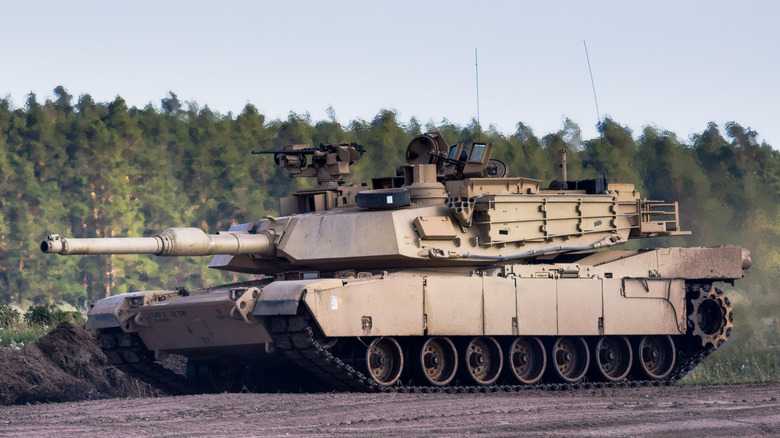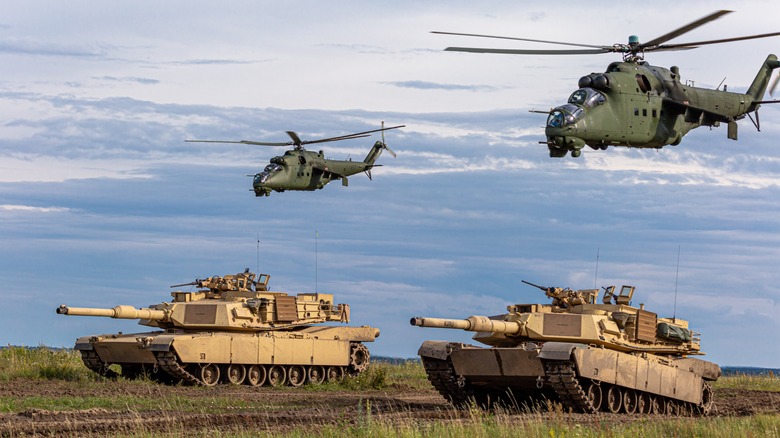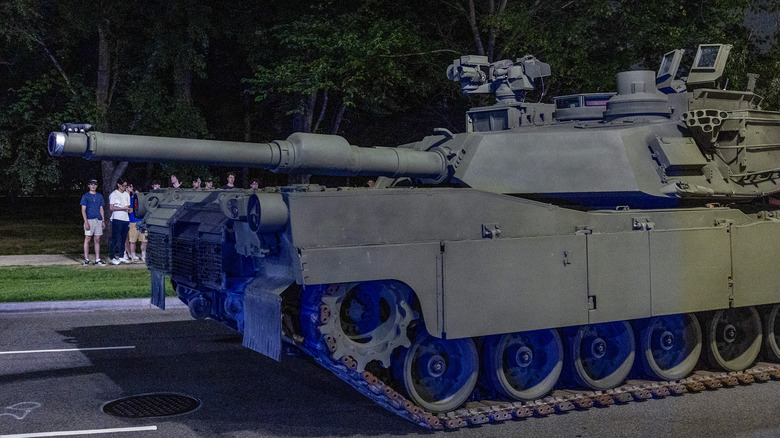Why The US Chose Turbines Over Diesel Engines For Its M1 Abrams Tanks
When the Army launched the M1 tank program in the early 1970s, it was determined to avoid the cost overruns and failures that plagued earlier efforts like the MBT-70 and XM-803. This time, the Army set a strict cost cap, limited requirements, and demanded working prototypes instead of paper designs. General Motors and Chrysler went head-to-head, with GM proposing a new variable compression diesel engine and Chrysler pushing for a gas turbine. Tests at Aberdeen Proving Ground showed GM's diesel-powered tank performed better overall, offering superior armor protection and more reliable fire control. The Army had made its choice and was ready to award the contract.
But in July 1976, Defense Secretary Donald Rumsfeld halted the decision. Against Army recommendations, he ordered a redesign to accommodate the turbine. Deputy Defense Secretary William Clements and other Pentagon officials pushed the shift, arguing the turbine represented the future of armored propulsion. Four months later, the contract went to Chrysler, and the Army was forced to adopt the turbine engine.
The move was controversial. The turbine was lighter, quieter, and had fewer moving parts, but it also consumed far more fuel (one of the M1 Abrams' biggest weaknesses), emitted dangerous exhaust, and required complex air filters to handle battlefield dust. Army leaders feared the engine was too immature. But outside pressures, including Chrysler's worsening financial condition and broader defense politics, meant the safer choice was overridden. The M1 Abrams would enter service with a turbine, not the proven diesel the Army had preferred.
Chrysler's bailout and the turbine push
By the mid-1970s, Chrysler was struggling. It had lost hundreds of millions in its car division, and its tank business was one of the only profitable parts of the company. For Chrysler, winning the M1 contract was a matter of survival. For General Motors, tank production was minor compared to its automotive empire. The Pentagon knew this imbalance, and Chrysler executives made sure Washington did too.
In June 1976, Chrysler chairman John Riccardo met with senior White House economic officials, including William Seidman, a close advisor to President Ford. Riccardo made it clear that Chrysler needed help. While no direct aid was promised, the administration signaled it would support the company where possible. Weeks later, Rumsfeld intervened in the tank competition. Chrysler also kept up the pressure on the Pentagon, even threatening a formal protest if GM was awarded the contract.
The turbine decision fit into this broader rescue effort. For Chrysler, it secured a multi-billion-dollar program and guaranteed years of defense revenue. For the Army, it meant accepting higher costs and unproven technology. Ultimately, Chrysler sold its tank division to General Dynamics in 1982, reaping hundreds of millions just when the company was near collapse. The M1 program became not only a weapons project but also a lifeline for an automaker the government wanted to keep afloat.
The diesel alternative that almost happened
The Abrams' turbine choice was not without alternatives. In the late 1990s and early 2000s, General Dynamics Land Systems tested diesel-powered Abrams prototypes using the MTU MT-883 V12 as part of the EuroPowerPack. Trials showed the diesel variant matched the turbine version in mobility and firepower while offering reduced operating costs. A second tested option, the Continental AVDS 1790 V12 diesel, also promised better fuel economy. These designs were evaluated for export customers, such as Turkey, and for potential U.S. Army upgrades, but were never adopted.
More recently, the AbramsX demonstrator has introduced a hybrid diesel-electric system, claiming 50 percent better fuel efficiency than the AGT1500. Despite these developments, the U.S. Army has retained the turbine for operational Abrams fleets, prioritizing its acceleration, multi-fuel flexibility, and established maintenance infrastructure. While diesel engines may offer logistical and cost benefits, the turbine's unique performance profile has kept it central to America's main battle tank doctrine for over four decades. It's also instrumental in the M1 Abrams being considered one of the best tanks ever made.


